The Century of the Gene, Evelyn Fox Keller, 2000.
 Evelyn Fox Keller, discusses the rediscovery of inheritance and the meaning of genes. By doing so she uncovers the limits of metaphors; her introduction
to life’s complexity becomes an adventure in discovering the miracle of
the structural and functional units of adaptation, immune response, memory,
and replication of variability."
Evelyn Fox Keller, discusses the rediscovery of inheritance and the meaning of genes. By doing so she uncovers the limits of metaphors; her introduction
to life’s complexity becomes an adventure in discovering the miracle of
the structural and functional units of adaptation, immune response, memory,
and replication of variability."
" . . .the convenience of gene talk as an operational shorthand for scientists working in specific experimental contexts."
Gelbart's Warning | What is she doing in the book? | Chapters | Challenges | Indelible concepts
"After all, Darwin himself instructed us not to lose sight either of the fundamental historicity of biological function or of the creative potential of historical accumulation, mindless though it may be.
"If a man were to make a machine for some special purpose but were to use old wheels springs, and pulleys, only slightly altered, the whole machine, with all its parts, might be said to be specially contrived for its present purpose. Thus, throughout nature almost every part of each living being has probably served, in a slightly modified condition, for diverse purposes, and has acted in the living machinery of many ancient and distinct forms."
p. 132.
dates | Chapters | a new revolution | graphics | Key ideas | conclusions
The challenges of consensus & discovery
"Only three predictions seem safe to make about the character of biology in the post-genomic age. First, a radically transformed intra- and intercellular bestiary will require accommodation in the new order of things, and it will include numerous elements defying classification in the traditional categories of animate and inanimate. Second, biologists who seek to make sense of these new elements will have a considerably expanded array of conceptual tools with which to work. Third, even so, they are not likely to stop talking about genes–not, at least, in the near future."
pp. 9-10.
Chapters 
 Introduction, The Life of a powerful word.
Introduction, The Life of a powerful word.
- One, The Regulation of Genetic Stability.
- Two, What Does a Gene Do?
- Three, How to Make an Organism
- Four, What Keeps Development on Track?
Conclusion, What are Genes for?
Gelbart's Warning | What is she doing in the book? | Chapters | First Challenge | Indelible concepts
 The life of a powerful word:
The life of a powerful word:
This means that there is a pervasive and popular belief in the dominance of nature, meaning genes determining an organism's "fate" or people's characters, despite the near absence of supporting evidence for the nature side of the "nature vs. nurture" argument.
page 5.
"With regard to understanding the A's, T's, G's, and C's of genomic sequence, by and large, we are functional illiterates."
William Gelbart
page 6.
"It is a rare and wonderful moment when success teaches us humility... precisely the moment we find ourselves in at the end of the twentieth century."
"For almost fifty years, we lulled ourselves into believing that, in discovering the molecular basis of genetic information, we had found the 'secret of life'; we were confident that if we could only decode the message in DNA's sequence of nucleotides, we would understand the program that makes an organism what it is."
p. 7.
"I review four of the more important lessons that molecular genomics has helped us learn."
1), "The first . . . maintaining the faithful reproduction of traits from generation to generation."
2), The paradox of genetic variability amidst genomic stability
How does the meaning of a gene reveal what it does?
3), The contrasts between a genetic program and a developmental program reveal the depth of our ignorance
4), The resiliency, reliability and robustness of existing heritability reveals the limitations of our prevailing reductionist concepts about genes.
p. 8.
"These tools are themselves the direct product of the most recent advances in molecular genetics and genomics; yet at the same time, and in the most eloquent testimony to the prowess of science I can imagine, they have worked to erode many of the core assumptions on which these efforts were first premised."
pp. 8-9.
" . . . I read an acknowledgment of the limitations of the most extreme forms of reductionism that had earlier held sway"
p. 9.
"...marketing the products of a rapidly expanding biotech industry...."
p. 10.
next
 Chapter 1, Motors of Stasis and Change:The regulation of Genetic Stability.
Chapter 1, Motors of Stasis and Change:The regulation of Genetic Stability.
The history of science is replete with irony, and the aftermath of Watson and Crick's tour de force offers no exception. As everyone knows Stent could not have been more wrong. Molecular biology's course after 1968 was anything but a decline."
p. 25.
The birth of genetics was based on simplicity & yet, new discoveries of recombinant DNA (restriction enzymes) developed into ever greater complexity.
But there is a paradox in that as DNA and RNA discoveries reveal an ever greater complexity; the widespread public beliefs in “genetic determinism” are growing ever more simplistic.
"left to its own devices DNA cannot even copy itself."
p. 24.
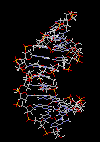
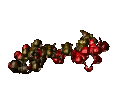

DNA double helices: vertical, supine, simplified.
"DNA is not intrinsically stable.
pp. 24-25.
Summary of meaning:
Stupendous as the model is for its beautiful structure; the illusion of knowledge it conveys can obscure the characteristics we must explicitly know are missing from deoxyribonucleic acid.
These include:
• three base-pairs in combination code for a particular kind of amino acid
• the precise sequence of amino acids determine a specific protein
• how a protein folds up dictates its functionality and thus its creative or destructive potential
• without proteins the DNA is an inert storehouse (warehouse) of evolutionary remnants awaiting their awakening.
Consensus:
This widespread scientific agreement was that by reducing a set of complex processes to
its component parts researchers would reveal greater clarity and discover underlying causes for the way the parts function as they contribute
to an integral whole. Simplicity of form and function was supposed to emerge as one moved from the cellular to the chromosomal level.
Discovery:
After 1953 and 1954, though there were skeptics before the deciphering
of the double helix, further discoveries about proteins, ribonucleic acid (RNA)
and cellular functions undermined the "reductionist" approach around
which two beliefs were central to the consensus in microbiology:
- That DNA or the deoxyribonucleic acid found entwined on
all the chromosomes in the nucleus of every cell was the template (hence
origin) for RNA instructing the creation of proteins in the intercellular
medium. This was called "the central dogma."
A schematic representation of genes along the X chromosome the name [CAPS] of the gene and what it is associated with.
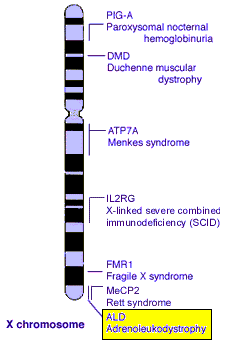
". . . against the astonishing beauty of the whole."
The scientific consensus that one gene equals one trait began to unravel quickly after the discovery of the structure of DNA.
"The first wrinkle on the face of the central dogma came in 959, when François Jacob and Jacques Monod introduced a distinction between structural genes and regulator genes. From their studies of bacterial adaptation, they concluded that an understanding of the biosynthesis of proteins requires the assumption that chromosomes house more than one kind of gene...."
p. 55.
The consequence of this unraveling consensus was that the simplicity
of the cell was shattered, the role of RNA in altering DNA in retroviruses such
as leukemia and acquired immune deficiency syndrome (AIDS) helped dismantle
a reductionist approach, and eventually the gene, as a concept, emerged as both
a decoding process and a cluster of protein mediated responses to changing cellular
conditions.
Background dates:
1859, Darwin's Origin of Species
1900, papers on “the rules of inheritance” DeVries,
“pangens”
1906, genetics announced by Bateson (William)
1909, Johannsen shortens the word & new term is "genes"
1909, genes suggested as a more precise word
1944, Schroedinger's question asked: What
is life?
1953, Franklin, Wilkins, Watson, & Crick devise molecular
DNA model
1956, Genes did not simply act but were subject to differential activation: Beermann.
Larger context
of these dates
"For Weismann, the burden of the stability lay in the sequestration of a certain substance 'of a definite…molecular composition' in a protected lineage of germ cells, where they would be held inviolate for future generations."
"But once sequestered, whether in the germ-plasm or in the nucleus, the fixity of elements themselves was simply taken for granted, accepted as part of the definition."
"The word gene he wrote, 'is completely free from any hypotheses.' But it takes more than a new word to effect a complete break with the past."
Keller's key points in the argument
that genes are not just codes for genotypes & expressions of selected amino acids that form chains and are folded into proteins. The proteins that are the
phenotypes are made of the following amino acids from specific groups of three nitrogen-base pairs:
"By 1966, using similar biochemical protocols, molecular biologists succeeded in establishing a complete genetic code by which successive triplets of nucleotides could be translated into a sequence of amino acids."
p. 54.
|
| 1. The inadequacy of DNA as a complete explanation for phenotypic inheritance and genotypic natural selection |
 |
| 2. the necessary collaboration of proteins during DNA replication for effective mitosis. |
| 3. “high fidelity" of genotype transcription. |
4. the four functional factors proteins perform
& SOS system which:
a. allows replication to proceed,
b. generates diversity for its own sake (adaptability under stress?).
|
| 5. preservation of “evolvability,”
evolution as both fortunate and a paring down of variety. |
6. individuality, multicellularity, & sex
arise from a synthesis of
a. nucleic acid integrity & amino acid
fidelity,
b. metabolic system of proteins for self-maintenance.
|
Keller's main point is?
Barbara McKlintock’s description of the genome as an exquisite organ
“ a highly sensitive organ of the cell monitoring genomic activities
and correcting common errors, sensing the unusual and unexpected events,
and responding to them.”
Page 33.
Gelbart's Warning | What is she doing in the book? | Chapters | Second set of Challenges | Indelible concepts
 Chapter 2, “The Meaning of Gene Function: What does
a gene do?”
Chapter 2, “The Meaning of Gene Function: What does
a gene do?”
“But what does a gene do?” “What in fact is a gene?”
-
Particulate materiality (Genotype)
-
Simultaneously animating
and directing the cell’s construction
-
Do genes act as “the cell’s brain” as Erwin
Schroedinger suggested, or
-
Are genes the means by which cell chemistry manufactures,
regulates and sustains both
- structure of proteins
- hereditary material for natural selection to act
upon?
47
How is elementary life
an oxymoron?
Because single-celled life is more complicated than we may be able to imagine.
"Whatever the gene might be, it would not serve to think of it as a minute organism."
"Nevertheless, for Muller as for others, the assumption that a gene was endowed with the inherent capacity to reproduce itself stood firm."
p. 48.
Geneticists "needed to explain how it is that the unit of heredity, as de Vries had earlier put it, 'impresses its character upon the cell.'
But what a formidable task! The problem of gene structure was challenging enough . . . . But the problem of gene function was more challenging by far; indeed to many biologists, an answer to the question of how structure could translate into function seemed so difficult to imagine as to defy reason."
"What kind of chemical molecule could fill so demanding a role, serving not only to preserve genetic memory through the generations but also, in each generation, to steer the course of individual development?"
p. 49.
- enzymes?
- genes as really little organisms?
- 'a box-within-box theory'?
"gene action" = "how genes act? "served as an effective way to bracket what could not be explained."
pp. 50-51.
"What really put teeth into the one gene-one enzyme hypothesis, and hence into the notion o of gene action, was the identification o of the genetic material with DNA, and in 1953, the deciphering of DNA's double helical structure."
p. 51.
"The answer was stunning in its simplicity..."
"At long last we had an answer to the question of how genes act. What does a gene do? It makes and enzyme."
A gene "encodes" a protein [enzyme, hormone neurotransmitter].
"Now all that was needed was a way to get at the sequence of nucleotides in the DNA."
p. 54.
Every nucleic acid of either the DNA or the RNA varieties is comprised of base pairs; sequences of these four (a fifth replaced Thymine for RNA) molecules: A, T, G, & C. A is for adenine, T is for Thymine, G is for Guanine, and C is for Cytosine.
| Base
pairs |
|
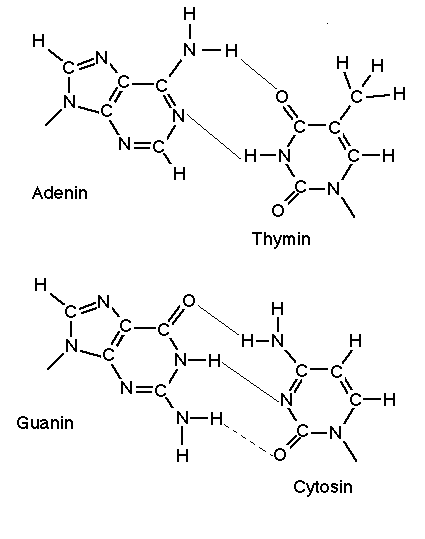 |
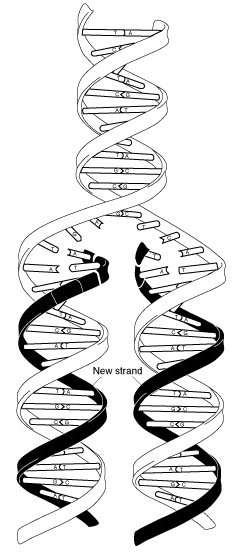 |
| DNA,
molecules or structure of the nitrogen base pairs form into the double helix. |
| |
|
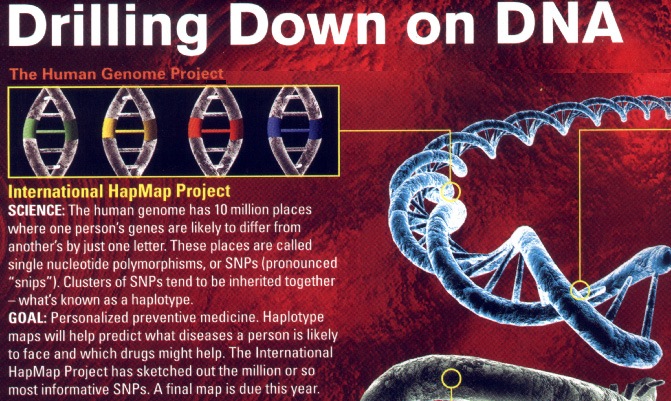
How could the structure of the gene be translated into the
function of the gene?
“they needed to explain how it is that the unit of hereditary, as de
Vries had earlier put it, ‘impresses its character upon the cell’.”
p. 49.
Gelbart's Warning | What is she doing in the book? | Chapters | Challenges | Indelible concepts
1940s Neurospora fungus studies by Beadle & Tatum:
"One gene - One enzyme hypothesis."
They "succeeded in tying specific mutations to the failure of specific steps in a metabolic pathway. This they argued demonstrated that genes control biochemical reactions."
"But neither Beadle of Tatum had any notion of the physical or chemical means by which genetic control could be effected."
"Genetical Implications of the Structure of Deoxyribonucleic Acid" May 1953
 "But at the same time, they also noted the large number of permutations that would be possible in a long molecule and, with that observation, the likelihood 'that the precise sequence of the bases is the code that carries the genetical information.' Within such a framework the one gene-one enzyme hypothesis, took on a new kind of sense."
"But at the same time, they also noted the large number of permutations that would be possible in a long molecule and, with that observation, the likelihood 'that the precise sequence of the bases is the code that carries the genetical information.' Within such a framework the one gene-one enzyme hypothesis, took on a new kind of sense."
p. 51.
Genes as conceived by 20th century scientists have a dual responsibility that DNA could fulfill.
"Now it could be understood as suggesting a direct correspondence between the sequence of nucleotides in a gene and the sequence of amino acids in a protein."
What does DNA (& it's associated chemicals) do?
A. Preserve genetic memory through
the generations 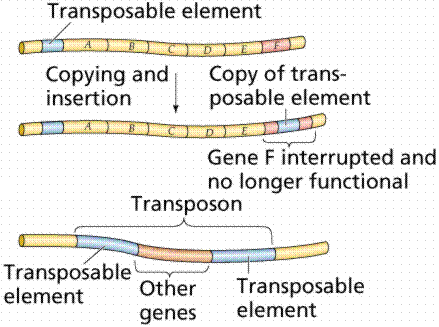 (fidelity),
(fidelity),
B. In each generation to steer the course of individual development
(adaptability).
Regulator genes
Central dogma is that DNA is translated by RNA carried from the nucleus into the surrounding cell and the mRNA in the Endoplasmic Reticulum codes for protein building, or strings together the amino acids and constructs a protein.
 Ribosomes in the endoplasmic reticulum.
Ribosomes in the endoplasmic reticulum.
Operon model for gene regulation
"The role of the regulator gene was to was to 'provoke the synthesis' of a repressor, which in turn regulates the transcription of the structural genes by binding to an operator region adjacent to the structural genes."

The term operator refers to yet another genetic element, one that is equally critical to regulation even though it has not yet been called a gene."
p. 57
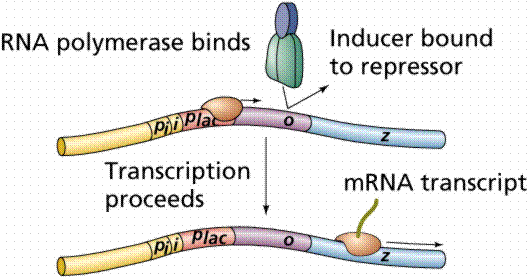
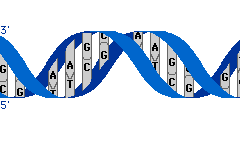
Splicing and editing mechanisms
"Summarizing the implications of their finding [Jacob & Monod], they wrote,
'The purely structural (one gene –to– one enzyme theory) does not consider the problem of gene expression. The discovery of a new class of genetic elements, the regulator genes, which control the rate of synthesis of proteins, the structure of which is governed by other genes, does not contradict the classical concept, but it does greatly widen the scope and interpretive value of genetic theory.' "
p. 56.
"Indeed, current estimates suggest that only three percent of the human genome codes for amino acid sequences, and in other organisms the percentage may be less.."
p. 59.
next
Four possible means for generating variability by operon splicing
 “I have been using the term gene to refer to the original stretch of DNA.
But doing so means that we have to give up on the notion, even for structural
genes, that one gene makes one enzyme (or protein). One gene can be employed
to make many different proteins….Which protein should the gene make, and
under what circumstances? And how does it choose?”
“I have been using the term gene to refer to the original stretch of DNA.
But doing so means that we have to give up on the notion, even for structural
genes, that one gene makes one enzyme (or protein). One gene can be employed
to make many different proteins….Which protein should the gene make, and
under what circumstances? And how does it choose?”
“Responsibility for this decision lies elsewhere, in the complex regulatory
dynamics of the cell as a whole.”
63
next
Gelbart's Warning | What is she doing in the book? | Chapters | Challenges | Indelible concepts
Ribonucleic acid, the replicating molecule may be older in origin than DNA
 Concerning the role of m-RNA (messenger RNA transcript [of the DNA] )
Concerning the role of m-RNA (messenger RNA transcript [of the DNA] )
“the players rewrite the score in their very execution of it.”
That is, protein construction by RNA can alter, control, influence, or suppress the expression (phenotype) of the base pair sequences (genotype).
Protein synthesis occurs in four steps
A. transcription (Marian)
B. splicing and editing
C. ribosome assembly of amino acids
D. translation into the into protein (Polypeptide) chain
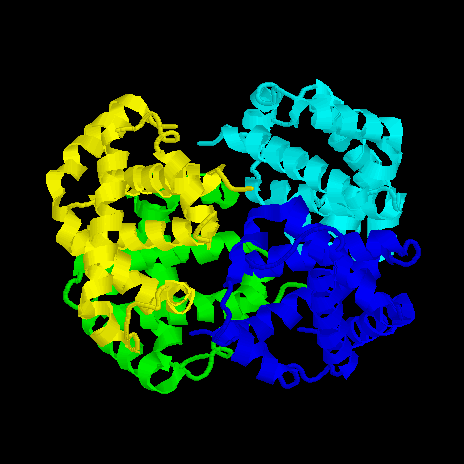 |
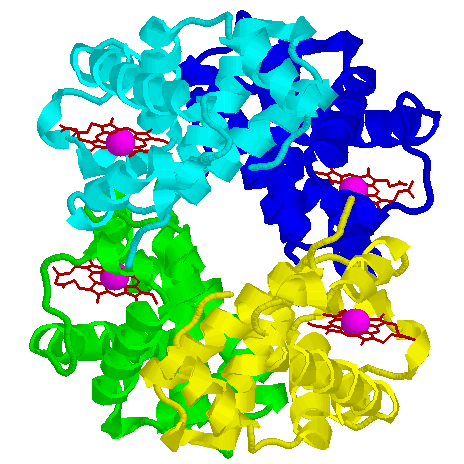 |
| Hemoglobin protein |
carries oxygen (chelated iron molecule)
in a porphyrin ring. |
A protein, by definition, is essential to life, called enzymes, hormones, anti-bodies, or "hard inheritance" meaning that "the theory that information in proteins cannot be conveyed to the nucleic acids in DNA."
[Mayr, Argument, p.181.]
Proteins too have their regulatory sites…[and] changes in the three dimensional
structure of a protein…at these sites; in turn, change in conformation
alters the function and activity of the protein.”
64.
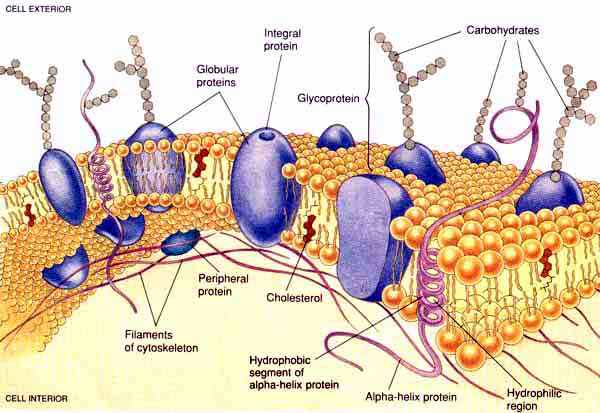
Thus: “one protein -- many functions.”
“But there is no single fact of the matter about what the gene is.”
66.

“Unlike chromosomes, genes are not physical objects but are merely concepts
that have acquired a great deal of” implicit assumptions and un-testable
attributes.
67
Thus the gene as an insufficient description of what the process of inheritance
involves, gave way to the concept of a “mediated” process or a “genetic
program.”
next
“The gene as two very different kinds of entities:
one,
a structural entity—maintained by the molecular machinery
of the cell so that it can be faithfully transmitted from generation to generation,
and
the other,
a functional entity that emerges only out of the dynamic interaction
between and among a great many players,…”
p. 71.
Epigenetic considerations
next
Gelbart's Warning | What is she doing in the book? | Chapters | Challenges | Indelible concepts
Vocabulary of the genetic structures and functions in living processes.
 The players:
The players:
Structural sequences (nitrogen
base pairs that constitute DNA and RNA forms) -- called base pair sequences, BPS.
Exons and introns
that specify code stretches or operons of DNA to select for amino acids
exons – "composed of coding (or expressed) segments of DNA…" introns – "long noncoding regions."
"junk DNA" or
"Intronic DNA" "What was it doing there?"
p. 59.
Regulatory sequences.
Prions, stretches of
nucleic acid that “jump” or move within the genome.
Proteins (which themselves are made
from mRNA transcriptions of DNA).
Ribosomes (where amino acid chains are
cobbled into polypeptide [protein] chains.
Junk DNA (like
spare parts) comprised of non-coding stretches of nitrogen bases.
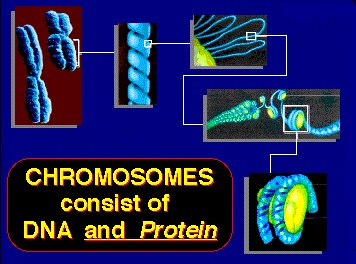
Chromosomes are physical structures
where the genome is “quartered” or housed in discrete units or
twisted bundles; traits are attributed to certain loci on specific C-somes,
or chromosomes.
"Richard Burian observed, 'There is a fact of the matter about the structure of DNA, but there is no single fact of the matter about what the gene is."
"All of these variations immeasurably confound the task of defining the gene as a structural unit."
"Similarly, discovery of the extensive editorial process to which primary transcript [from DNA to mRNA] is subject, the regulatory mechanisms operating on the level of protein synthesis, and others operating even on the level of protein function, confound our efforts to give a clear cut functional definition of the gene."
pp. 66-67.
"It is arguable that the old term gene, essential at an earlier stage of the analysis, is no longer useful." Peter Portin.
William Gelbart, working at the forefront of molecular genetics, concurs in suggesting that the gene might be a 'concept past its time.'"
"Unlike chromosomes genes are not physical objects but are merely concepts that have acquired a great deal of historic baggage over the past decades." William Gelbart.
p 67.
next
Gelbart's Warning | What is she doing in the book? | Chapters | Challenges | Indelible concepts
 Chapter 3: "The Concept of a Genetic Program: How to Make an Organism."
Chapter 3: "The Concept of a Genetic Program: How to Make an Organism."
How can the concept of a “genetic
program…be said to explain development?”
“This is the picture of life:….
"We know that all cells contain the directions for all cell life, written in
the DNA of their chromosomes, and that these directions include specification
of how to make the many kinds of enzyme molecules by means of which the cell
converts available substances into metabolites suitable for the making of
more cells.”
James Bonner, 1965,
p. 73.
“How can an organism be built out of the mere accumulation of different
proteins?”
Gene action is not gene activation, just as genetic programs require genetic regulatory mechanisms
p. 74.
"It is clear that in most cases there is a chain reaction between the direct activity of the gene and the end product that the geneticist deals with as character."
Alfred H. Sturdevant, 1932.
p. 75.
Ernst Mayr’s critique of “bean-bag” genetics in both the related fields of population genetics and developmental biology harked back to Morgan's warning that looking at isolated genes with an eye on the false belief that one gene makes one trait
was not taking account of gene interactions.
p. 76.
"By any measure, . . . analysis of gene regulation must count as one of the major triumphs of early molecular biology, but even more influential was . . . how such regulation is achieved."
p. 79
The Genetic Program
p. 80
next
Gelbart's Warning | What is she doing in the book? | Chapters | Challenges | Indelible concepts
 Chapter 4: "Limits of Genetic Analysis: What keeps development on Track?"
Chapter 4: "Limits of Genetic Analysis: What keeps development on Track?"
“ . . . any one cell represents more an historical than a physical event . . . . No,
any living cell carries with it the experiences of a billion years of experimentation
by its ancestors. You cannot expect to explain so wise an old bird in a few
simple words."
Max Delbrück, 1949, p. 103.
“There are no absolute phenomena in biology."
" But if contingency is the key to evolution, it might be
argued that the obverse of contingency—the capacity to stay on track, despite
the myriad vicissitudes that invariably plague a developing organism, is the
key to biological development.”
p. 104.
"I believe there is more waiting to be said of ...the importance of chance in evolution."
Darwin taught us the importance of chance in evolution by natural selection, but he also taught us the importance of challenge."
" . . . challenge provides a powerful driving force, as well, for the evolution of our understanding of the processes of biological evolution."
After all these are "evolved mechanisms for genetic stability, for evolvability, and for developmental robustness that molecular analyses have begun to reveal."
p. 132.
next
Gelbart's Warning | What is she doing in the book? | Chapters | Challenges |Enduring Lessons | Indelible concepts
Lesson:
The idea that genes are an unmediated entity with a one to one
relationship to traits (phenotype, or expressed observed characteristics of
an organism) is a resilient prejudice.
The public, based on historical conditioning since the middle
ages, believes that we are what we are due to our heredity and that today is translated into a being's genetic endowment. The widespread
belief that inheritance is the primary determinant in behavior persists in shaping
public opinions about conduct, actions, stimulus, and responses.
Thus some serious divergence has emerged between experts' and public perceptions:
Wilson: the cell is most like a rain forest in its complexity
of functional parts.
Wes Jackson: the genome is most like an ecosystem with complex
levels.
Genome as an integrated system?
Geno-system, as a combination of genome and ecosystem in order to convey the probable complexity or scale of details involved in what have simply been called genes.
Recall that 30,000 genes or more are at work in making, maintaining and reproducing a human being. In addition to DNA, RNA and proteins make up the functional parts of the genome that is more than a collection of genes.
"to make sense of the evolved mechanisms for genetic stability, for evolvability, and for developmental robustness that molecular analyses have begun to reveal."
p. 132.
Gelbart's Warning | What is she doing in the book? | Chapters | Concluding Challenges | Indelible concepts
Conclusion: What Are Genes for?
"…much the same might be said of the popular image of the gene, and even about the many conscientious efforts of biologists to provide us with a more sophisticated understanding of genetic processes."
p. 136.
"our new understandings of the complexity of developmental dynamics have critically undermined the conceptual adequacy of genes as causes of development; furthermore, recent developments in molecular biology have given us new appreciation of the magnitude of the gap between genetic information and biological meaning."
pp. 137-138.
"Thus, from the perspective of the developing organism, the question of what genes are for has become increasingly difficult to answer."
An analogy
"Words enable us."
p. 138.
"The power of words derived from a relation to things that is always, and of necessity, mediated by language-speaking actors."
p. 139.
Genes, or a gene is more of an operational center for the construction of proteins that regulate all phases of an organism's response to surrounding conditions which are made up of other proteins. Comparable to the many levels of feedback that operate in an ecosystem, the processes we have discovered in the genome acts as a collection of feedback mechanisms that regulate the internal levels of proteins, enzymes, catalysts, and hormones needed by any living being to respond vibrantly to the uncertainties of their shifting conditions, geography, and climate.
Siry, Summary.
"There may be 'no single fact of the matter about what a gene is,' but neither is there necessarily a problem in such a state of affairs."
p. 139.
| Expert |
|
|
 |
A crucial paradox persists between the recent genomic discoveries
and the widespread public misunderstanding of genetic science.
"Words enable us. And while it scarcely needs saying that words are not the same kind of entities as things, that we must not confuse the one with the other, we do quite often need reminding of the equally serious mistake that comes form thinking about things as independent of words. Words have a power to impinge on the world that is unquestionably real." p. 138. |
 |
| Genomics |
| |
| |
|
Popular biases |
"recombinant DNA revolution"
"Over the last quarter of the twentieth century, largely as a consequence of that revolution, we have acquired the technical capability to target and alter specific sequences of nucleotides, thereby turning molecular markers that earlier could only be seen into handles for effecting specific kinds of change. Today, . . . genetic engineering has become a reality."
Gelbart's Warning | What is she doing in the book? | Chapters | Opening Challenges | Conclusions | Indelible concepts

Introduction, The Life of a powerful word.
- One, The regulation of genetic stability.
- Two, What does a gene do?
- Three, How to make an Organism.
- Four, What Keeps development on track?
Conclusion, What are genes for?
Graduate class context
Keller Context | Keller overview | Unseen | Genome
Darwin | | Lewontin | | Margulis | | Mayr | | Steingraber | | Tattersall | | Thomas
Living Downstream
Genetics
related files | Science
subject index | Home | Vocabulary
| Gallery
Genetics | Science Index
| Analysis | Population
Index | Global Warming Index | Nature
Index | Brief

 Evelyn Fox Keller, discusses the rediscovery of inheritance and the meaning of genes. By doing so she uncovers the limits of metaphors; her introduction
to life’s complexity becomes an adventure in discovering the miracle of
the structural and functional units of adaptation, immune response, memory,
and replication of variability."
Evelyn Fox Keller, discusses the rediscovery of inheritance and the meaning of genes. By doing so she uncovers the limits of metaphors; her introduction
to life’s complexity becomes an adventure in discovering the miracle of
the structural and functional units of adaptation, immune response, memory,
and replication of variability."









 (fidelity),
(fidelity),
 Ribosomes in the endoplasmic reticulum.
Ribosomes in the endoplasmic reticulum.








